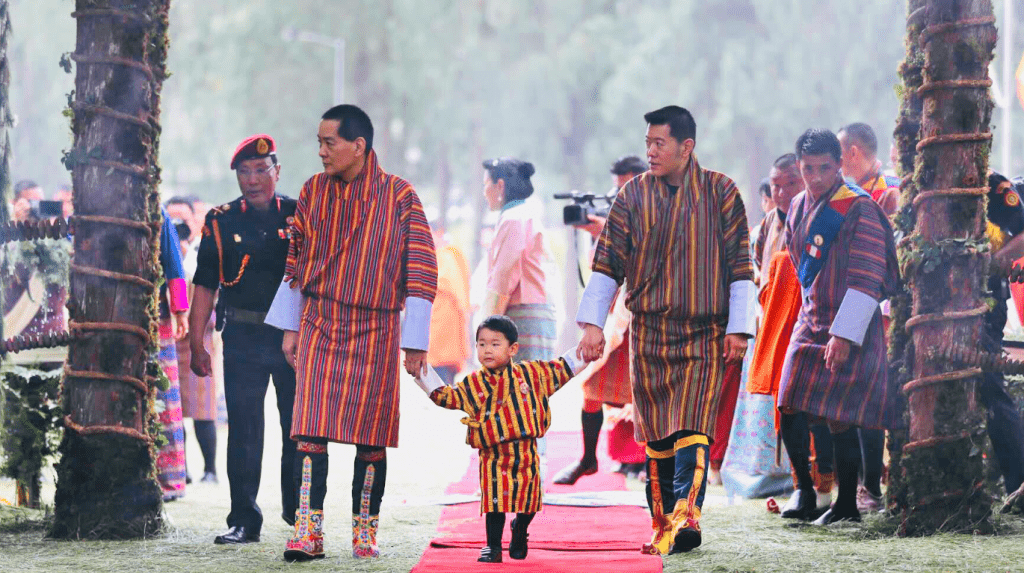Tshoglam – Traditional Bhutanese Boots
On any given day inside the traditional boot house in Chubachu, Thimphu, you will find a handful of boot-makers glued to their machines. And the noise from the machines will take a little getting used to. But, once you’re past that, you marvel at the craftsmanship of their work.

The boots being made are no American cowboy boots but the traditional Bhutanese tshoglams. However, today, the Bhutanese boots are going through a makeover. Traditionally the boots were made out of gechen (silk) but today tshoglhams are made from leather.
Legend has it that the tshoglham came to Bhutan with Zhabdrung in 1616. However, it wasn’t until the time of the fourth Druk Desi Gyalse Tenzin Rabgay, that zorig chusum, or the thirteen arts and crafts were formally categorized and the traditions passed on.
Culturally, tshoglhams are worn by people according to their social status. The color of the middle part of the boot (tshoglham kor) designates the rank of the wearer – yellow is reserved for the King and Je Khenpo (Chief Abbot), orange for ministers, red for high-ranking officials, blue for members of the Parliament or National Council, and green for normal citizens.
By the end of the 20th century, only ministers and Dasho were wearing these boots, and the craft of boot-making faced the threat of dying out. The revival of this craft finally caught the attention of the Bhutanese government, when in 2000 six students from the National Institute for Zorig Chusum were sent to one Lopen Tenzin Wangdi in Jangsa in Paro to learn the craft.
Lopen Tenzin Wangdi was the only remaining person who had honed the craft of tshoglam making. He had learnt the art during his visit to Tibet and had been kept busy in Bhutan making the boots for members of the royal family and bureaucrats.
Today, although the main design of tshoglhams has not changed drastically, the materials have undergone some change – thin leather soles have been replaced with thick rubber soles to make them more comfortable, and customers can bring their own design for the shaft of the boot or request to add zippers. Lham, the female version of tshoglhams, are being designed and recently, half-tshoglhams (ankle length) have also surfaced.

